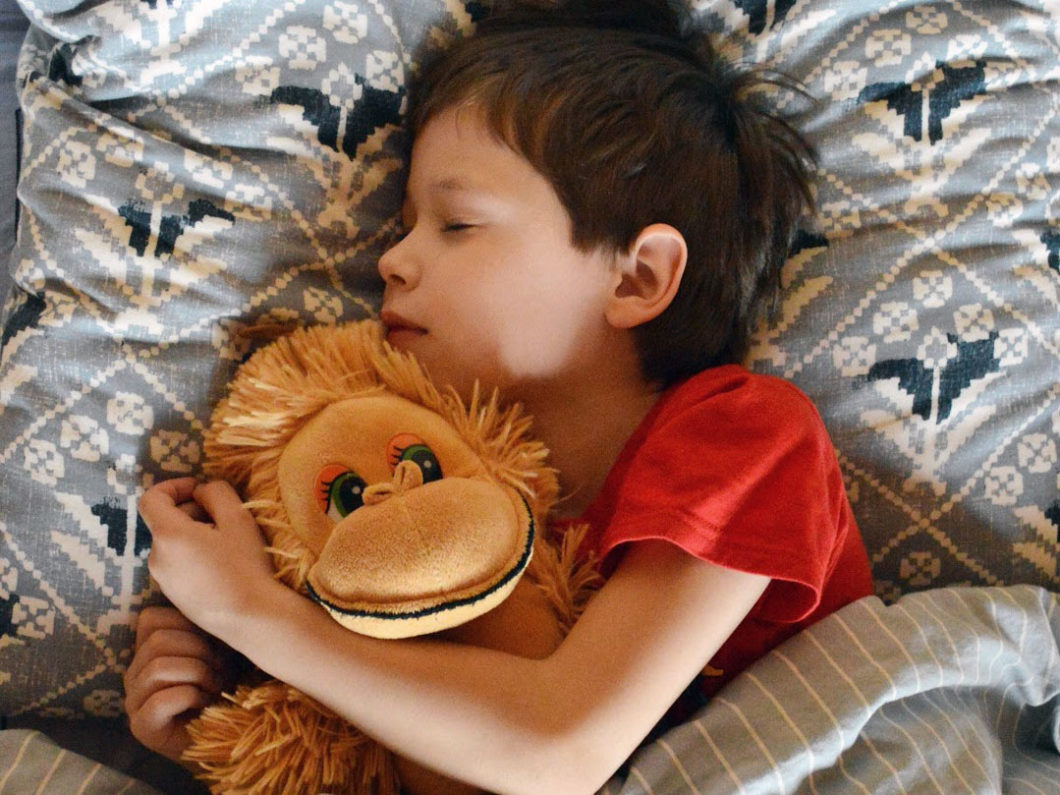When looking for solutions for sleep problems, it’s tempting to turn straight to an expert. But the fact is that you know your kid best.
As a parent, you are in the prime seat. You are there when your kids are born and for their first cry and first smile. You are there when they take their first steps, speak their first words and eat their first solid foods. You are there when they get sick, have a tantrum in the supermarket or crawl into your bed at some ungodly hour.
No one will make your children’s future and best interests a priority as much as you. This puts you in the perfect position to take charge of your child’s sleep.
How can you do it?
Setting your child’s bedroom up as a sleep sanctuary is a simple yet effective place to start.
Creating a lovely sleep environment helps to set positive associations with sleep. When these positive associations become the norm, they then become triggers for sleep.
In other words, by creating a range of environmental signals, you can train the body and mind to know instinctively that it is time to sleep. It’s a positive self-reinforcing spiral.
Here are some ways you can create a sleep sanctuary for your kids.
Light in your environment can assist or disrupt sleep cycles. If your internal clock does not register light cues, you may experience irregular or drifting circadian rhythms and either delayed or advanced sleep phase disorders.
The wrong kind of light, such as that emitted by electronic screens, will switch off melatonin, disrupting sleep onset. Darkness signals the release of melatonin.
To address this, ensure you and your kids are not exposed to any bright lights or screens for at least an hour before bedtime. If you are able to dim the lights throughout the house, start turning them down an hour before bed.
Ideally, your child’s bedroom will be dark or have very soft lighting. If your kid needs a nightlight, a small one in a rosy colour light will be best. You could use a small soft lamp on a timer, which fades slowly to complete darkness as your child drifts off to sleep.
And here’s one vital ingredient: keep all electronic screens outside the bedroom.
Harsh or stimulating sounds can keep us awake or rouse us from sleep.
These include sounds from a TV, iPad or phone, family members talking loudly (or fighting), household noises like washing dishes, noisy neighbours, dogs barking, cars, wind, storms and music.
The best strategy is to lower any household noise levels you can control. Start your dishwasher earlier or later; move socialising and conversations to far-away parts of the house.
For all those sounds you can’t control, do what you can to soundproof your child’s room. Soft furnishings like rugs and curtains go a long way in absorbing noise.
Some soft sounds can, however, ease children (and adults) into sleep. Consider using quiet, gentle classical music, white noise machines or ambient nature noises like waves and running water.
These soft sounds can mask out other household and neighbourhood noise and set the scene for restful sleep. However, avoid relaxation tracks with irregular sounds like gongs or chimes, as these can rouse your child as they try to drift off.
Air quality in the bedroom is vital for sleep health.
Air quality can also have a big impact on your child. Is there a problem with mould, dust or any other funny scent? Do what you need to eradicate it.
Air temperature also needs to be just right. The ideal sleep temperature is 18 degrees Celsius. Higher or cooler temperatures can lead to sleep deprivation, stress and parasomnias.
Adding a relaxing scent into the air can have a positive effect for some children. Choose scents associated with love and safety, or essential oils that soothe and relax, like lavender or rose.
Using a specific scent can help your child develop an association between that smell and sleep, making it easier for them to drop off.
Bedrooms should be a space for sleep, but many children’s bedrooms are also play areas, cluttered with toys, games, electronics and other stimulating items.
If you can, create a play area for all of these items outside the bedroom.
If this isn’t possible, packing everything up for sleep can be part of the bedtime routine.
Kids need to feel safe, secure and comfortable in their physical environment in order to get to sleep easily.
Children who experience regular nightmares can find bedtime to be very stressful. You can help them feel safe in their rooms by doing a safety check on the windows and doors, or even ‘sweeping the room’ with an ‘invisible light sabre’ to keep imaginary monsters away.
Happy photos next to the bed (cuddly, warm, smiling photos of loved ones, or photos of great holidays) can help kids feel safe and connected even while alone in their bed.
Choosing pyjamas and blankets with soft, hypoallergenic material can also help soothe kids. Look for pyjamas with no seams for sensitive kids, or pyjamas and blankets with added scent for kids who respond to soft scents.
Setting the scene for further investigations
Once you have the physical environment set up, you’ll start to get a clearer picture of your child’s true sleep quality and quantity.
If you suspect that your child has sleep problems that run more deeply, then creating a sleep sanctuary will help you to investigate this more clearly. You’ll be able to distinguish between environmental factors, over which you have control, and the potential behaviour, physical or medical issues that may need further investigation and expert help.
Looking for more?
Let’s build a new generation of healthy sleepers!
With my book Sleep-Wrecked Kids, I support you to become the lifeguard of your child’s sleep. Packed full of information and practical help, it will get you on the way to good sleep for all the family. Order your copy here!



